#science activism
Text


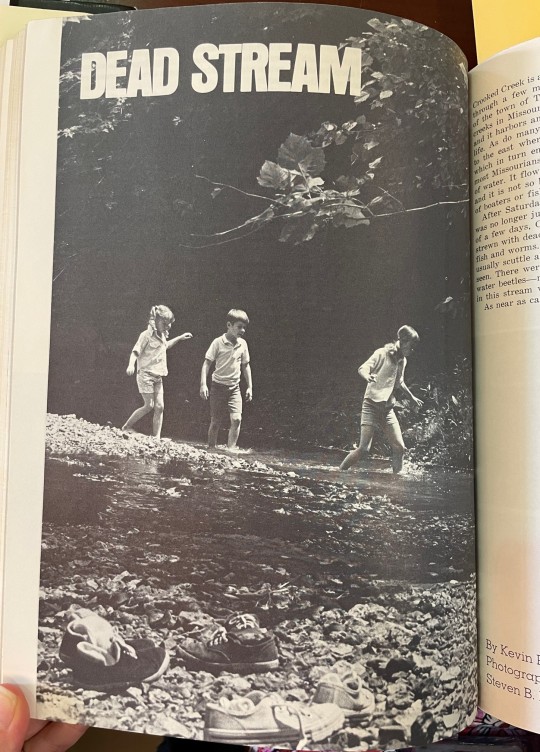


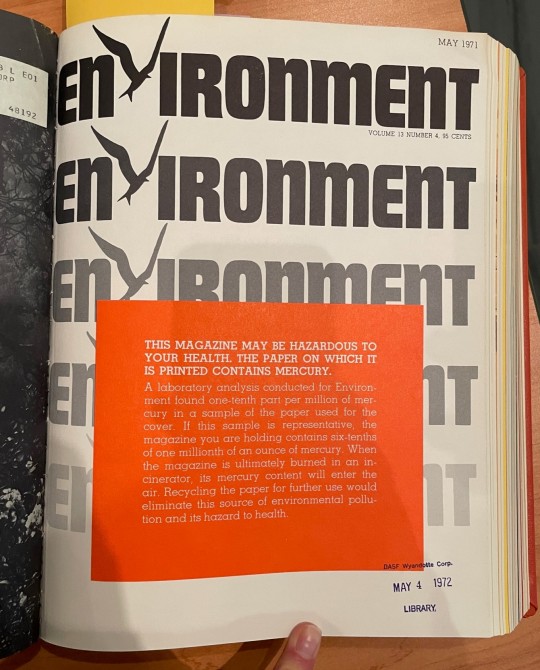

Environmental Activism in Print
In the mid-1950’s a group of scientists, doctors, community members, and women activists based in St. Louis, Missouri became increasingly concerned about the health effects of atomic testing and fallout so they created a group called the Committee for Nuclear Information. They realized that the public did not have full and accurate information about the risks and decided that the creation of a magazine was their best chance of making a difference to inform the public. The magazine started in 1958 with the title Nuclear Information. After the Atmospheric Test Ban Treaty was signed in 1963 the group decided to shift their focus to more general environmental issues and changed title of the magazine to Scientist and Citizen and the name of their group to Scientists' Institute for Public Information. The magazine changed names again to Environment in 1969 to 1997. This magazine is extraordinary for its time because its purpose was to use the scientists as conduits of information to the public supposedly without political bias.
We have issues from 1969 to 1997. Environment
There's a great chapter on the creation of this activist committee in the book Disrupting Science by Kelly Moore.
#enviroment#environmental movement#environmental activism#science activism#activism#journals#DDT#new car smell#pollution#recylcing#toxic chemicals#air pollution#water pollution#othmeralia
17 notes
·
View notes
Text

Source
More of this
#government#environment#environmentalism#environmetalists#climate science#climate activism#news#current events#Europe#the left#progressive
19K notes
·
View notes
Note
they have a point though. you wouldn't need everyone to accommodate you if you just lost weight, but you're too lazy to stick to a healthy diet and exercise. it's that simple. I'd like to see you back up your claims, but you have no proof. you have got to stop lying to yourselves and face the facts
Must I go through this again? Fine. FINE. You guys are working my nerves today. You want to talk about facing the facts? Let's face the fucking facts.
In 2022, the US market cap of the weight loss industry was $75 billion [1, 3]. In 2021, the global market cap of the weight loss industry was estimated at $224.27 billion [2].
In 2020, the market shrunk by about 25%, but rebounded and then some since then [1, 3] By 2030, the global weight loss industry is expected to be valued at $405.4 billion [2]. If diets really worked, this industry would fall overnight.
1. LaRosa, J. March 10, 2022. "U.S. Weight Loss Market Shrinks by 25% in 2020 with Pandemic, but Rebounds in 2021." Market Research Blog.
2. Staff. February 09, 2023. "[Latest] Global Weight Loss and Weight Management Market Size/Share Worth." Facts and Factors Research.
3. LaRosa, J. March 27, 2023. "U.S. Weight Loss Market Partially Recovers from the Pandemic." Market Research Blog.
Over 50 years of research conclusively demonstrates that virtually everyone who intentionally loses weight by manipulating their eating and exercise habits will regain the weight they lost within 3-5 years. And 75% will actually regain more weight than they lost [4].
4. Mann, T., Tomiyama, A.J., Westling, E., Lew, A.M., Samuels, B., Chatman, J. (2007). "Medicare’s Search For Effective Obesity Treatments: Diets Are Not The Answer." The American Psychologist, 62, 220-233. U.S. National Library of Medicine, Apr. 2007.
The annual odds of a fat person attaining a so-called “normal” weight and maintaining that for 5 years is approximately 1 in 1000 [5].
5. Fildes, A., Charlton, J., Rudisill, C., Littlejohns, P., Prevost, A.T., & Gulliford, M.C. (2015). “Probability of an Obese Person Attaining Normal Body Weight: Cohort Study Using Electronic Health Records.” American Journal of Public Health, July 16, 2015: e1–e6.
Doctors became so desperate that they resorted to amputating parts of the digestive tract (bariatric surgery) in the hopes that it might finally result in long-term weight-loss. Except that doesn’t work either. [6] And it turns out it causes death [7], addiction [8], malnutrition [9], and suicide [7].
6. Magro, Daniéla Oliviera, et al. “Long-Term Weight Regain after Gastric Bypass: A 5-Year Prospective Study - Obesity Surgery.” SpringerLink, 8 Apr. 2008.
7. Omalu, Bennet I, et al. “Death Rates and Causes of Death After Bariatric Surgery for Pennsylvania Residents, 1995 to 2004.” Jama Network, 1 Oct. 2007.
8. King, Wendy C., et al. “Prevalence of Alcohol Use Disorders Before and After Bariatric Surgery.” Jama Network, 20 June 2012.
9. Gletsu-Miller, Nana, and Breanne N. Wright. “Mineral Malnutrition Following Bariatric Surgery.” Advances In Nutrition: An International Review Journal, Sept. 2013.
Evidence suggests that repeatedly losing and gaining weight is linked to cardiovascular disease, stroke, diabetes and altered immune function [10].
10. Tomiyama, A Janet, et al. “Long‐term Effects of Dieting: Is Weight Loss Related to Health?” Social and Personality Psychology Compass, 6 July 2017.
Prescribed weight loss is the leading predictor of eating disorders [11].
11. Patton, GC, et al. “Onset of Adolescent Eating Disorders: Population Based Cohort Study over 3 Years.” BMJ (Clinical Research Ed.), 20 Mar. 1999.
The idea that “obesity” is unhealthy and can cause or exacerbate illnesses is a biased misrepresentation of the scientific literature that is informed more by bigotry than credible science [12].
12. Medvedyuk, Stella, et al. “Ideology, Obesity and the Social Determinants of Health: A Critical Analysis of the Obesity and Health Relationship” Taylor & Francis Online, 7 June 2017.
“Obesity” has no proven causative role in the onset of any chronic condition [13, 14] and its appearance may be a protective response to the onset of numerous chronic conditions generated from currently unknown causes [15, 16, 17, 18].
13. Kahn, BB, and JS Flier. “Obesity and Insulin Resistance.” The Journal of Clinical Investigation, Aug. 2000.
14. Cofield, Stacey S, et al. “Use of Causal Language in Observational Studies of Obesity and Nutrition.” Obesity Facts, 3 Dec. 2010.
15. Lavie, Carl J, et al. “Obesity and Cardiovascular Disease: Risk Factor, Paradox, and Impact of Weight Loss.” Journal of the American College of Cardiology, 26 May 2009.
16. Uretsky, Seth, et al. “Obesity Paradox in Patients with Hypertension and Coronary Artery Disease.” The American Journal of Medicine, Oct. 2007.
17. Mullen, John T, et al. “The Obesity Paradox: Body Mass Index and Outcomes in Patients Undergoing Nonbariatric General Surgery.” Annals of Surgery, July 2005. 18. Tseng, Chin-Hsiao. “Obesity Paradox: Differential Effects on Cancer and Noncancer Mortality in Patients with Type 2 Diabetes Mellitus.” Atherosclerosis, Jan. 2013.
Fatness was associated with only 1/3 the associated deaths that previous research estimated and being “overweight” conferred no increased risk at all, and may even be a protective factor against all-causes mortality relative to lower weight categories [19].
19. Flegal, Katherine M. “The Obesity Wars and the Education of a Researcher: A Personal Account.” Progress in Cardiovascular Diseases, 15 June 2021.
Studies have observed that about 30% of so-called “normal weight” people are “unhealthy” whereas about 50% of so-called “overweight” people are “healthy”. Thus, using the BMI as an indicator of health results in the misclassification of some 75 million people in the United States alone [20].
20. Rey-López, JP, et al. “The Prevalence of Metabolically Healthy Obesity: A Systematic Review and Critical Evaluation of the Definitions Used.” Obesity Reviews : An Official Journal of the International Association for the Study of Obesity, 15 Oct. 2014.
While epidemiologists use BMI to calculate national obesity rates (nearly 35% for adults and 18% for kids), the distinctions can be arbitrary. In 1998, the National Institutes of Health lowered the overweight threshold from 27.8 to 25—branding roughly 29 million Americans as fat overnight—to match international guidelines. But critics noted that those guidelines were drafted in part by the International Obesity Task Force, whose two principal funders were companies making weight loss drugs [21].
21. Butler, Kiera. “Why BMI Is a Big Fat Scam.” Mother Jones, 25 Aug. 2014.
Body size is largely determined by genetics [22].
22. Wardle, J. Carnell, C. Haworth, R. Plomin. “Evidence for a strong genetic influence on childhood adiposity despite the force of the obesogenic environment” American Journal of Clinical Nutrition Vol. 87, No. 2, Pages 398-404, February 2008.
Healthy lifestyle habits are associated with a significant decrease in mortality regardless of baseline body mass index [23].
23. Matheson, Eric M, et al. “Healthy Lifestyle Habits and Mortality in Overweight and Obese Individuals.” Journal of the American Board of Family Medicine : JABFM, U.S. National Library of Medicine, 25 Feb. 2012.
Weight stigma itself is deadly. Research shows that weight-based discrimination increases risk of death by 60% [24].
24. Sutin, Angela R., et al. “Weight Discrimination and Risk of Mortality .” Association for Psychological Science, 25 Sept. 2015.
Fat stigma in the medical establishment [25] and society at large arguably [26] kills more fat people than fat does [27, 28, 29].
25. Puhl, Rebecca, and Kelly D. Bronwell. “Bias, Discrimination, and Obesity.” Obesity Research, 6 Sept. 2012.
26. Engber, Daniel. “Glutton Intolerance: What If a War on Obesity Only Makes the Problem Worse?” Slate, 5 Oct. 2009.
27. Teachman, B. A., Gapinski, K. D., Brownell, K. D., Rawlins, M., & Jeyaram, S. (2003). Demonstrations of implicit anti-fat bias: The impact of providing causal information and evoking empathy. Health Psychology, 22(1), 68–78.
28. Chastain, Ragen. “So My Doctor Tried to Kill Me.” Dances With Fat, 15 Dec. 2009. 29. Sutin, Angelina R, Yannick Stephan, and Antonio Terraciano. “Weight Discrimination and Risk of Mortality.” Psychological Science, 26 Nov. 2015.
There's my "proof." Where is yours?
#inbox#fat liberation#fat acceptance#fat activism#anti fatness#anti fat bias#anti diet#resources#facts#weight science#save
8K notes
·
View notes
Text
An awesome, tear jerking, interview with one of my favorite humans, Neil Tyson.
youtube
Never heard of this channel before today; some pretty good interviews on here!
0 notes
Photo


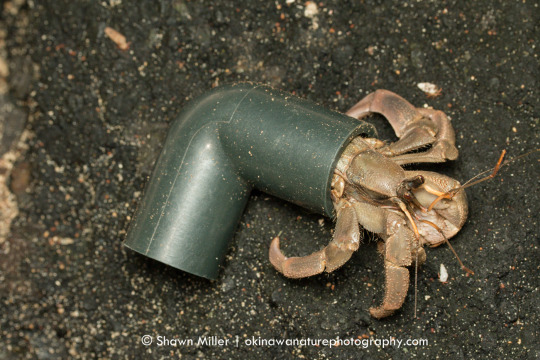


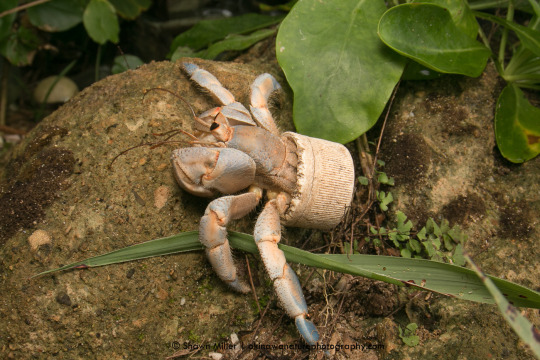

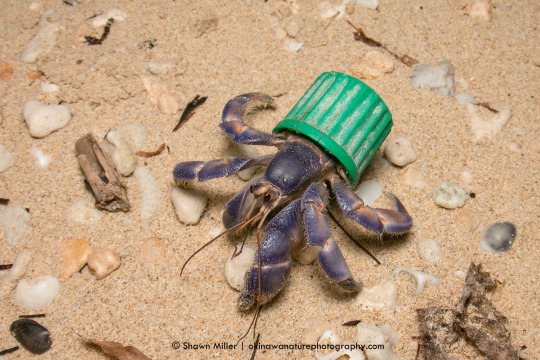

(May 12, 2023) We are raising money for a crowd funded research project investigating the cause of blueberry hermit crabs in Okinawa, Japan using trash found on the beach as “homes” instead of natural shells. These hermit crabs are endemic to the southern islands of Japan, and they act as coastal environmental engineers. They are endangered on several islands, and we want to try and understand why they are resorting to beach trash for shells. Please consider sharing this post and donating to the project. The fundraising will be active for the next 45 days (until June 26).
You can find all project details here: https://experiment.com/projects/blueberry-hermit-crabs-with-beach-trash-homes
We suspect that areas with high rates of tourism lead to beach combers collecting natural shells leaving nothing for the hermit crabs to use. It’s possible that overfishing of turbo snails which would naturally provide shells for the crabs may also be a factor. We will survey many sites across several islands in Okinawa to try and determine a cause of this behavior.
We will be working closely with national geographic photographer Shawn Miller (photo credits above) and several researchers in Japan. Additionally, we will complete extensive beach clean ups in the areas we study. Thank you so much for reading!
#conservation#hermit crabs#ecology#biology#research#beach combers#plastic waste#save our shells#make the switch for nature#national geographic#shawn miller#beach trash#beach clean ups#blueberry hermit crab#science experiments#marine science#marine biology#activism#nature#beach#travel#environment
7K notes
·
View notes
Text

This is a metal snail (Volcano Snail) that lives on underwater volcano vents in the Indian Ocean. Its shell and scaly feet both are armoured with layers of iron, making it the only animal to incorporate iron sulfide into its skeleton 🐌
📷: Dr Chong Chen/IUCN
#snails#snail life#snail#iron snail#oceans#indian ocean#science#news#research#biodiversity#iucn#iucn red list#science acumen#wildlife biologist#marine biology#biology#volcano#active volcano#amazing
4K notes
·
View notes
Text
Stretching Ant Rafts
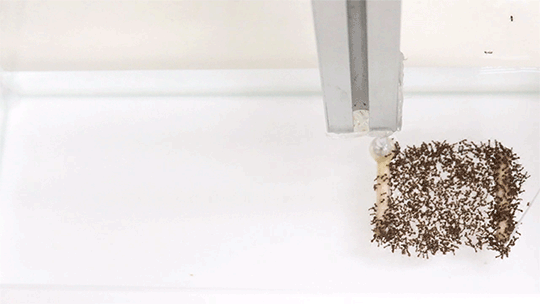
In their natural habitat, fire ants experience frequent floods and so developed the ability to form rafts. Entire colonies will float out a flood in a two-ant-thick raft anchored to whatever vegetation they can find. Because ants in the upper layer of the raft are constantly milling about, the rafts have some ability to "self-heal" as they're stretched. (Image credit: top - Wikimedia Commons, others - C. Chen et al.; research credit: C. Chen et al.; via APS Physics)
Read the full article
814 notes
·
View notes
Text


height ahh difference
#team fortress 2#tf2#science party#red oktoberfest#tf2 medic#tf2 heavy#tf2 engineer#this one's a bit fruity on purpose ahem#alternative title is “Gravel war field medic stands way too close to his patients and dies while taking all the collateral damage”#jokes aside I have been thinking about how medic is tall and if he were to stand really close to engie he'd be looking down onto him#for some reason I just like the idea of him doing that; hands in his pockets; staring at one specific part in engie's face but not his eyes#meanwhile for heavy he has to look up#Hallo mein Großer; wenn ich darf? And just zooms into his face but in a sultry way#put the back of your hand against his chest so it feels like you want to avoid actively touching him but very much do it on purpose#It's like neck and shoulder stretch exercises for medic; ↓↑↓↑#Haha gotcha this was going to be another joke after all#👌#This was the last thing I wanted to draw before work gets super busy again
689 notes
·
View notes
Text

Rob Anderson Appreciation Post 💜🏳️🌈
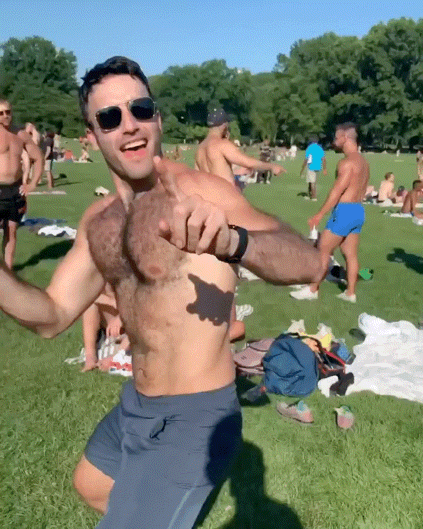
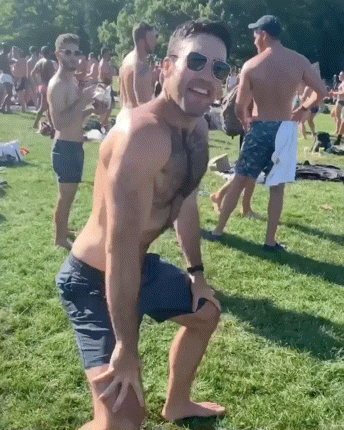
Extremely handsome and hairy 🤤 comedian best known for his viral recaps of 90's TV shows.
🏳️🌈💜🏳️🌈💜🏳️🌈💜🏳️🌈💜

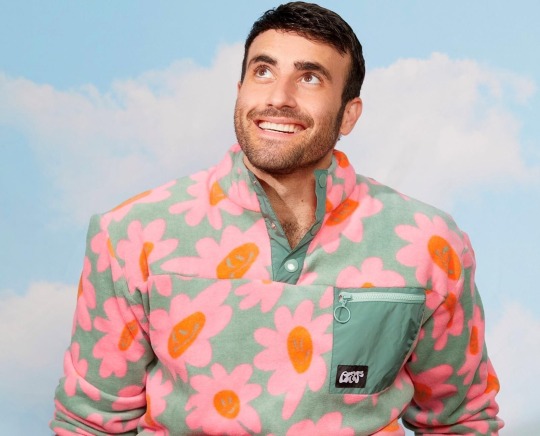
An out and proud gay man who’s “Gay Science” book and tour ask questions like “Why can’t gays sit in a chair properly?” 🤣🤣
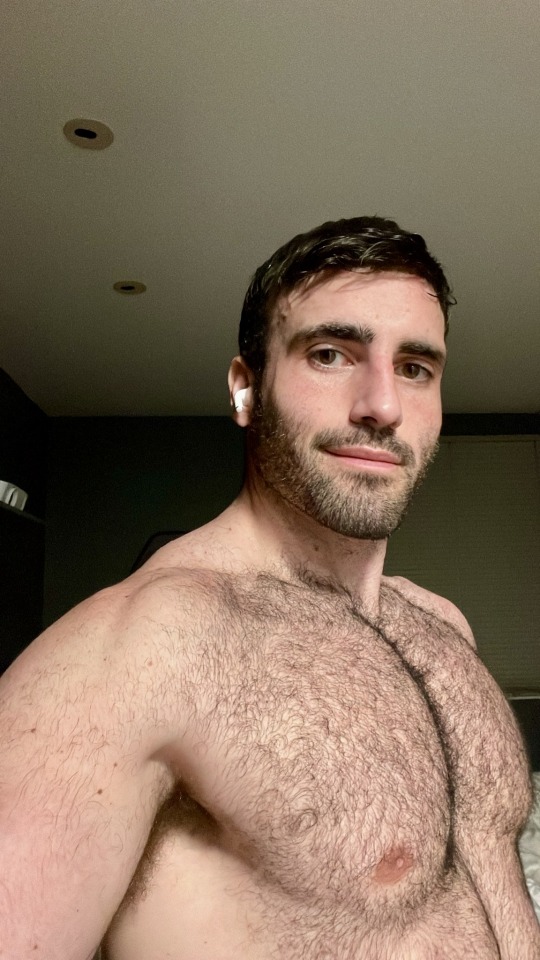

A beautiful guy both inside and out by all accounts
💜💜💜💜

Plus ….. he can move 🤤🤤💜💜

#rob anderson#appreciation post#gay interest#gay icons#gay man#gay community#gay comedy#gay activism#handsome#hairy#gay science#so handsome#hairy stud#hairyscruffguys#very hairy#hairy torso#gorgeous#beautiful man#comedian#so hot and sexy#hairy male#men with beards#bearded hunk
241 notes
·
View notes
Text
So having a fossil fuel executive as the president of the UN Climate Summit is going about as well as expected


Fossil fuel companies and the politicians they employ are murderers. And they should be treated as such.
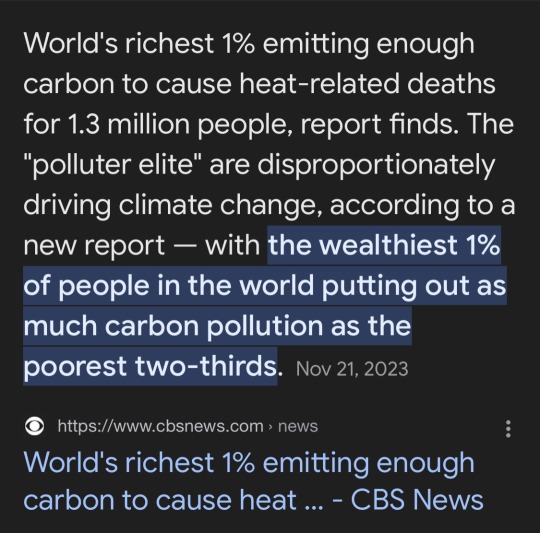
Abolish billionaires. Ban private jets & mega yachts. Invest in renewable energy and stop listening to politicians and corporations over scientists.
#cop28#climate change#capitalism#eat the rich#climate crisis#wealth inequality#late stage capitalism#us politics#climate emergency#climate activism#joe biden#climate science#fossil fuels#climate justice#climate news#climate solutions#tax the rich#abolish billionaires
292 notes
·
View notes
Text
I feel really uncomfortable in media when the Earth is just left behind. Interstellar, Elysium, Starfield, Lost in Space, Wall-E (which is kind of an exception) all just pretend this planet has the potential to lose all meaning for us. This place is full of history and life and culture and plants and animals. But as soon as we have the ability to leave, as soon as our tiny speck of green and blue in the universe coughs a little bit we leave it to become a planet of dust. There's not even an attempt to save anything that makes this place special. The animals and plants, who are our neighbours and roommates? They can all go extinct, who cares, as long as we survive. The buildings, the paintings, the architecture and art? It's all meaningless rubble, as long as we survive. I can't tell if everyone really thinks this planet is nothing to us except a place to infest, or it's just an unfortunate pattern in science fiction. I've never seen the movie but I watched the ending scene of Don't Look Up with Leonardo DiCaprio. What a beautiful scene, I watch it a lot. This planet is everything.
#environment#environmental justice#environmental activism#starfield#lost in space#interstellar#wall e#elysium#don't look up#leonardo dicaprio#science fiction#solarpunk#dystopia#dystopian science fiction
214 notes
·
View notes
Text
The Good Perch
“You would think,” Captain Sunlight said drily, “That a spaceport organized enough to have a whole section for courier ships would have a more visible labeling system.”
“Yeah, really,” I agreed with a frown at the small sign marking our ship’s berth. The thing was barely ankle-height and a thin font. Not even a bright color; it hardly stood out from the pavement in its gray-and-black subtlety. With all the spacefarers parading past in a rainbow of body types and clothing styles, not to mention the equally wild spaceships everywhere, those signs were easy to miss. I asked the captain, “Have you been here before? Is this normal, or did the wrong person take charge of designing things?”
“It’s been a while,” said Captain Sunlight, crossing her scaly arms. “I don’t recall this being a problem before. But I suspect our wayward client is still wandering the walkways looking for us.”
“Normally I’d say our ship would stand out, but the visibility’s not great for that either.” Lemon-shaped spaceships with foldable solar sails were pretty uncommon. The one parked behind us would have been easy to spot from a distance if not for the larger ships looming close on either side. These berths were too close together.
Captain Sunlight pulled her phone out of a belt pouch. “Still says they’re on the way.”
“Maybe we need to scoot forward a bit?” I suggested. “Make the ship easier to see?” I stepped up to the walkway for a better look at the view from there.
This turned out to give someone else a better view of me.
“Hey, person who climbs things!” called a cheerful voice. “Come help me brace this.”
After a confused half-second, I located the speaker on top of the gray-brown ship next to ours. I realized with a start that this wasn’t the first time our ships had been parked side-by-side. “Hey, Acorn!” I called back. “Are you waiting for clients too?”
“We were,” the fellow courier called back, waving something that looked like a wrench. She herself still looked like a baboon crossed with a crocodile. “Now it’s time for errands and maintenance, and this needs fixing before we get back into space. Care to give me a hand? Everybody else is either busy or too much of a coward to get up this high.”
“Sure thing!” I said with a glance at Captain Sunlight, who was waving me on. “What’s the best way up?”
Acorn directed me to a row of handholds on the other side of the ship, which made for a nice easy climb. A pity her crewmates didn’t appreciate heights; the spaceport was a beautiful, chaotic sprawl of color from here. And the top of the ship was flat enough to feel plenty safe.
“Welcome to the good perch,” Acorn said, offering me a wrench. “It’s a very exclusive club. Can you hold this part in place so I can adjust that?”
“Absolutely,” I told her. “This end, right? Wait, got it.” I actually had no idea what this open panel was for, but I like to think I hid it well. The job was a simple one with two of us. I could see how it would have been awkward with just one, though. I wondered if she’d resorted to using her feet to hold things in place. I sure would have.
“Got it!” she said. “Now to close it all up. I knew that would be quick.”
I removed the wrench. “What’s the saying? More hands means less work?”
“Makes sense to me. Though by that logic, your friend there could get everything done by himself.”
I looked down to see that Mur had joined Captain Sunlight, in all his many-tentacled squidlike glory. “He probably could, actually. Though I don’t know how he is with heights.”
“Well, no need to share the good perch,” Acorn announced, snapping the panel shut. She spread her arms. “Look at this panorama!”
“It is a nice one! I was just thinking that. What kind of ship is that blobby green one over there? I haven’t seen it before.”
Acorn stood up for a better look. “I think it’s a Waterwill design?”
“That makes sense.” I got to my feet too, glad the ship we stood on wasn’t one of the shiny racer models. Those were much too slippery to make good sightseeing towers.
Not that Acorn seemed bothered either way. She probably would have found grippy shoes somewhere and run up the side just to prove she could. Her appreciation for climbing had been a nice change the first time I ran into her, and was no different now, given how much time I spent among alien crewmates who didn’t have tree-swinging monkeys in their family trees.
“That ship looks like it would make an excellent climbing structure,” she said, pointing at a pink model with grooves along the sides. “Pity it belongs to a security force who are likely to be uptight about such things.”
I laughed. “Isn’t that always the way of it? There’s a police station in my hometown with a roof that slopes down to meet a very climbable wall, and you have no idea how tempting it looked. Well. Maybe you know.”
She definitely understood, and we spent an enjoyable few minutes talking about which buildings and spaceships looked like the most fun to climb.
Then I spotted someone wandering from one berth marker to the next, looking both lost and a little nearsighted, and I had a suspicion that I’d found our missing client. This was a fellow human wearing the kind of drapey clothes that spoke of dignity and no little wealth. Her expression was exactly the kind I’d wear if I had to deal with those hard-to-read signs long enough to be late.
“Hey Captain!” I called down to Sunlight. “Is that her?” I pointed.
Captain Sunlight hurried forward with her phone out, matching the look of the person with an image there.
Yup. Called it.
Acorn chuckled while the pair of them exchanged greetings and complaints about the station layout. “Nice one. The wisdom of the heights strikes again. Do they need you down there now?”
“Probably,” I said. “Actually not yet, this package is a small one. Mur’s got it.” As I spoke, Mur pushed a hovercart forward with a box on it liberally covered in “fragile” stickers. It had a carrying handle on the top, which it had come with, and rubber bumpers on every corner, which Paint had added just to be safe. All precautions had been taken.
“Oh good,” Acorn said. “Then enjoy the view with me a little longer.” She bent to pull something from the toolbag’s side pocket. “Top-of-the-tree snack?”
“Are those the ones you’re named for?” I asked, remembering a conversation the last time I’d seen her. Translations being what they were, her name meant a similar nut from her homeworld. It had been an amusing conversation, since we were both named after things found in trees. She didn’t know what a robin was, but once I explained it, she claimed to have met a number of people back home with similar names.
“Yes, the salted version,” Acorn said, opening the bag. “I recall these were on the safe list for your species.”
“Safe and tasty,” I agreed. “Thank you.” I accepted a handful of alien acorns and marveled quietly at how universal salt was on snacks. Well, for some species. I don’t think Waterwills or Strongarms were that into overly salty food in general. Probably for slug-like reasons. Eggskin the medic would know. I should ask him later.
Acorn peered over the other side of the ship. “Ohh, Riverbrook’s wearing his goofy helmet. I owe him some acoustics since he played that loud music while I was working.” She crouched, peering down at a crewmate who had just emerged. With care, she selected a nut from the bag. “Think you can thwack him from here?” The grin she threw over her shoulder was full of teeth.
I joined her at the edge. “I like my odds.”
The crewmate was one of those people made of crystals instead of flesh. I forget the species name. Very interesting to look at, and unlikely to be hurt by a high velocity acorn no matter where it hit. The helmet was golden, shiny, and probably a fashion statement of some kind.
“First we throw, then we hide.”
“Got it.”
“One, two, throw!”
Ping! Ping!
“Ow, what was — Acorn, is this yours?!”
We both giggled in childlike glee, just out of sight.
“No thanks, you can have it!” Acorn called back.
“I’m going to put this in your fruit drink next mealtime.”
“Good luck with that!”
I nodded. “Ah, a prank war. A noble pursuit.”
“See, you get it.” Acorn offered me more nuts.
I took them and made myself more comfortable. “I don’t suppose you know what a rattlesnake is?”
“Nope.”
“Then let me tell you about the time I got Trrili — the big scary Mesmer on my ship — with a classic prank from Earth.”
“Oh, do tell!”
I didn’t have to get back to my ship for a few minutes yet, which left plenty of time for more anecdotes and snacks on the good perch.
~~~
The ongoing backstory adventures of the main character from this book. More to come! And I am currently drafting a sequel!
#my writing#The Token Human#humans are weird#humans are space orcs#haso#hfy#eidw#writblr#writeblr#science fiction#that bit about the police station is true btw#not my hometown but a nearby one#I first saw that bit of architecture when I was actively doing parkour on a weekly basis#its existence haunts me#they say to write what you know#I have also thrown acorns at people from up a tree#that's good fun#and the rattlesnake prank is from that other story#'What’s a Minor Heart Attack Between Friends?'#also good fun
155 notes
·
View notes
Text
Connecting on Climate
Often, I think we need to shift the climate and biodiversity crises discussions from facts to stories.
Why choose native trees and plants?
Well, do you remember how bugs splatted on your windshield decades ago compared to now?
Do you remember the fireflies of childhood?
After we notice, after we link these ideas to our personal stories, then it's time to cultivate questions.
Who else misses these insects?
What about plants with absent pollinators.
What about bats and birds missing their food?
Our kids missing constellations of fireflies?
We link to personal stories.
We foster the follow-up questions.
Then, we reject abstraction and hopelessness. We reject all or nothing thinking and tie our concerns to concrete things we CAN do.
We teach the immense power of doing something even when we can't do everything.
There is so much we do not control.
Yet, we do control some things.
We have agency.
Perhaps you can plant a white oak and learn/notice who benefits.
Perhaps you can reject lawn and cultivate native plants.
Perhaps you can volunteer or donate or reject damaging products. People care when the issue at hand feels like a part of their own story. People continue to care when they believe they have the power to participate in shaping the story's future.
We need to get creative and bring the facts home to people's stories, to their sense of self, but the good news is the truth is a wind at our backs.
Our environment IS a part of everyone's personal story and our individual actions can/do shape the future of our planet.
1K notes
·
View notes
Text
#climate legislation#global climate change#climate activism#climateaction#good news#environmentalism#science#nature#environment#conservation#climate change#climate crisis
158 notes
·
View notes
Text
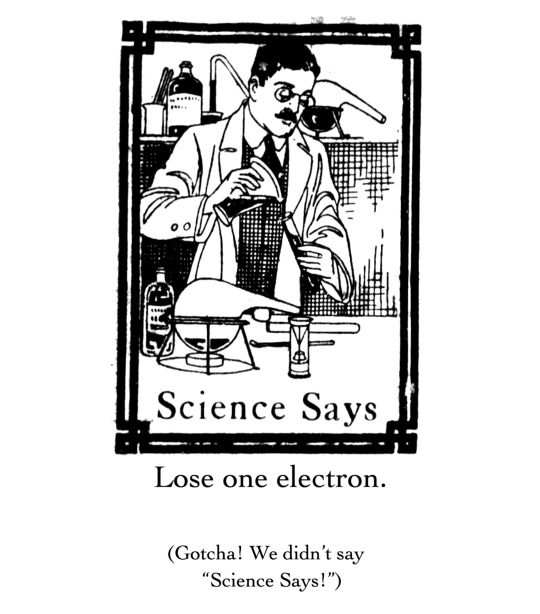
126 notes
·
View notes